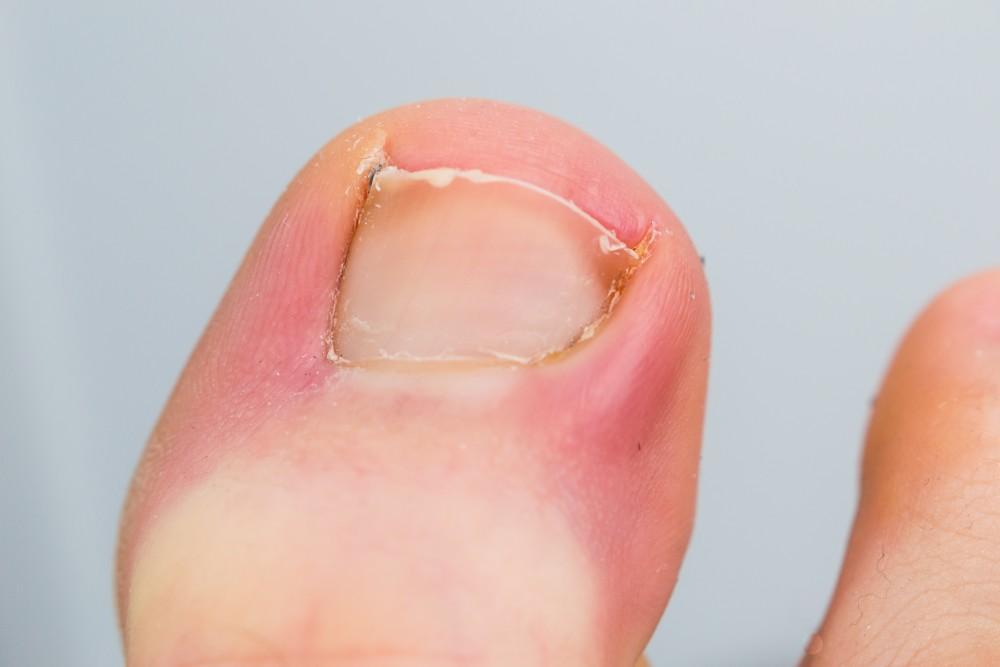Written by Amy Judge (Podiatrist)
Are you experiencing discomfort or pain in your toenail? This is a common concern that many people encounter at some stage in their lives. Understanding why your toenail is sore can help in finding the appropriate solution.
Why Is My Toenail Sore? A Quick Answer
Discomfort or pain in the toenail is a common issue many people encounter. This discomfort can stem from several reasons, such as ingrown toenails, trauma, fungal or bacterial infections, repetitive pressure, incorrect nail trimming, psoriasis and underlying health conditions.
The key to addressing sore toenails is understanding the cause, which paves the way for appropriate solutions. Professional care from a podiatrist is crucial for a personalised treatment plan, so don’t hesitate to seek professional advice for persistent soreness.
8 Reason Your Toenail Hurts
Here are some common reasons why your toenail might be causing you discomfort:
Ingrown Toenail
One of the most frequent causes of sore toenails is an ingrown toenail. This occurs when the edge of the nail grows into the surrounding skin, leading to inflammation, tenderness and sometimes infection [1].
Trauma or Injury
Stubbing your toe or dropping something heavy on it can result in trauma to the toenail. This trauma can cause pain, swelling and discolouration of the nail.
Fungal Infection
Fungal infections, such as onychomycosis, can affect the toenails and lead to thickening, discolouration and soreness of the nail bed [2].
Bacterial Infection
Bacterial infections, particularly around the nail folds, can cause soreness, redness and swelling. This can occur alongside an ingrown toenail or as a result of an injury.
Repetitive Pressure
Continuous pressure on the toenail, such as from tight-fitting shoes or repetitive activities like running, can lead to soreness and discomfort.
Poor Nail Trimming
Improper nail trimming techniques, such as cutting nails too short or rounding the edges too much, can contribute to ingrown toenails and subsequent soreness.
Psoriasis of the Nails
Psoriasis can affect the nails and cause changes, such as pitting, discolouration and separation from the nail bed. This can result in soreness and discomfort in the affected nails [3].
Underlying Health Conditions
Certain health conditions, such as diabetes or peripheral vascular disease, can affect the health of your toenails, making them more prone to soreness and infection.
While these are common causes of sore toenails, it is crucial to recognise that each case is unique and must be assessed on an individual basis. Consulting a qualified podiatrist for an accurate diagnosis and personalised treatment plan is essential.
Remember, your comfort and well-being matter, so if you’re experiencing persistent soreness or discomfort in your toenails, please reach out to us here at Lidcombe Podiatry and schedule an appointment for professional care.
Home Treatment Tips to Ease The Discomfort of Toenail Pain
Here are some simple home treatment tips to ease the discomfort while you wait to see your podiatrist:
- Soothe with Soaks: Treat your foot to a relaxing soak in warm, salty water for around 15 minutes. It can work wonders for easing pain and reducing swelling.
- Keep it Clean: Keep your toenail area clean by giving it a gentle wash with mild soap and water. Just be careful not to aggravate it further.
- Shoe Comfort: Opt for comfortable shoes that give your toes plenty of breathing room. Tight shoes can exacerbate the pain.
- Dodge the Discomfort: Avoid activities that put extra pressure on your sore toenail, like excessive walking, running or lunges.
- Trim with Care: If you need to trim your toenail, do so gently and cut it straight across. Avoid cutting it too short or rounding the edges.
- Topical Relief: If you have an antiseptic cream/liquid at home, apply it as directed to help fend off infection.
- Pain Management: Consider over-the-counter pain relievers to help alleviate the discomfort.
- Rest and Raise: Whenever possible, give your foot a break and elevate it to reduce swelling.
Bear in mind that these tips are only temporary solutions; it’s in your best interest to visit your local podiatrist for further treatment. You’ll not regret it!
References:
[1] Mayo Clinic Staff. Ingrown toenails. Mayo Clinic. Available from: https://www.mayoclinic.org/diseases-conditions/ingrown-toenails/symptoms-causes/syc-20355903 [Accessed March 21, 2024].
[2] American Podiatric Medical Association. Common Foot Problems. APMA. Available from: https://www.apma.org/patients/foot-conditions [Accessed March 21, 2024].
[3] Al-Mutairi N. Nails in psoriatic arthritis. Indian J Dermatol Venereol Leprol. 2018;84(3):261-264. doi:10.4103/ijdvl.IJDVL_52_18





